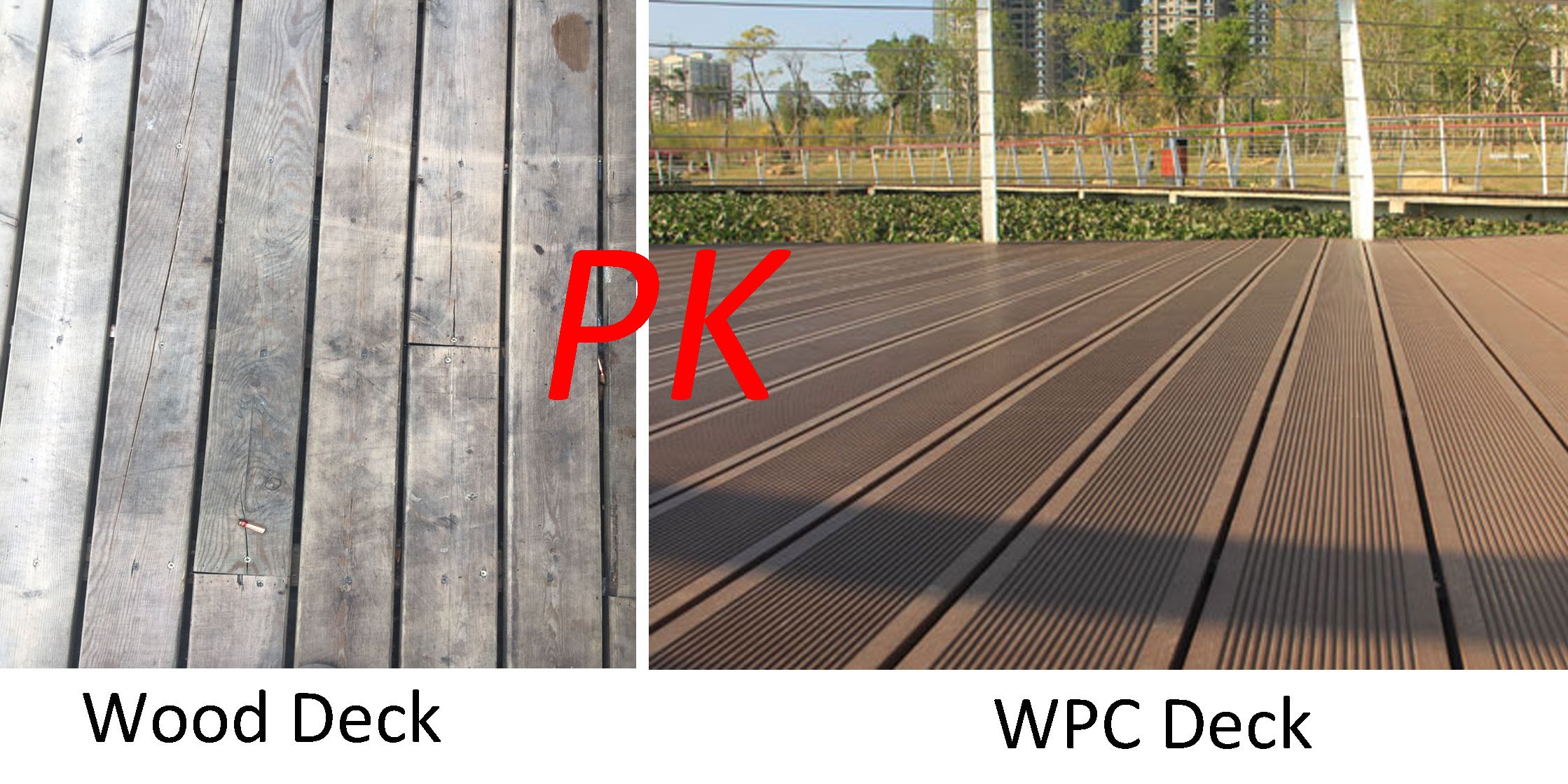There is something liberating about spending time outside on a deck. Among the myriad choices available, two prominent contenders stand out: Wood is still a popular choice, but new technologies are making WPC decking more attractive and sustainable. Each material possesses distinct characteristics, catering to different preferences and needs. This article will make comparison between wpc decking vs. wood decking to help you making choice for your outdoor oasis.
Understanding WPC Decking vs. Wood Decking
WPC Decking
WPC(Wood Plastic Composite) decking, a modern alternative to traditional wood decks, is usually comprised of a mix of recycled wood flour and recycled plastic materials, bound by resins. This composition creates a sturdy, low-maintenance material that aims to emulate the natural appearance of wood while offering enhanced durability.
There is a great variety of composite decking made from recycled content, and more options are likely to make an appearance in the near future. Like wood, they range from lower-end to middle-grade to high-end.
Wood Decking
Wood decking, a classic choice for outdoor spaces, encompasses a range of natural wood types such as cedar, redwood, or pressure-treated lumber. Its charm lies in the authentic, warm appeal and the variety of wood species available, each offering unique aesthetics. The traditional appeal of wood decking caters to those who appreciate its natural beauty, with the added benefit of being relatively easier to repair and customize.
Pros and Cons of WPC Decking vs. Wood Decking
WPC Decking Pros
- Low Maintenance and Durability: Composite decking requires minimal upkeep, such as sealing or staining, and boasts exceptional durability, resisting rot, mold, and insect damage.
- Resistance to Environmental Elements: It’s engineered to withstand fluctuating weather conditions, preventing warping, cracking, and fading, making it ideal for various climates.
- Versatility in Appearance: Available in a wide array of colors, textures, and finishes, composite decking offers customization options to suit different design preferences
WPC Decking Cons
- Higher Initial Cost: The upfront cost of composite decking tends to be higher than traditional wood options, potentially impacting the initial project budget.
- Susceptibility to Heat: In direct sunlight, some composite materials may retain heat, making them warmer to the touch.
Wood Decking Pros
- Aesthetic Appeal: The authentic, warm aesthetic of natural wood creates a timeless and inviting outdoor space.
- Affordability: Wood decking often tends to have a lower initial cost compared to composite materials, making it a budget-friendly choice.
- Repair and Customization: Wood decks offer easier repair and customization options, allowing for alterations, staining, or painting to suit changing preferences.
- Wood is nontoxic and is a natural
Wood Decking Cons
- Issues with natural wood decking include vulnerability to hungry insects and rot, as well as the frequency and cost of general maintenance.
- Wood decks should be thoroughly cleaned annually, and should be refinished as soon as the color starts to fade—usually every few years.
Troubles come from wood:
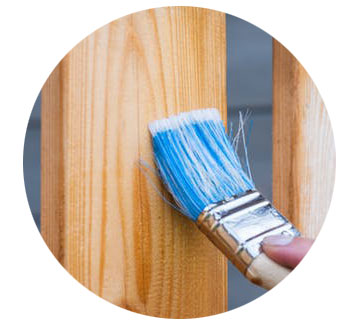
Needs regular maintenance of painting, polishing or sealing
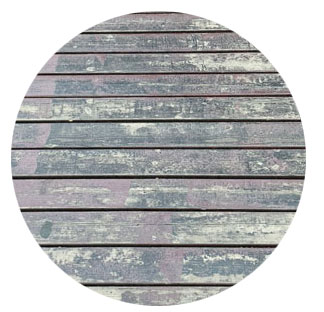
Fades and rots easily, showing tough stains and scuffs
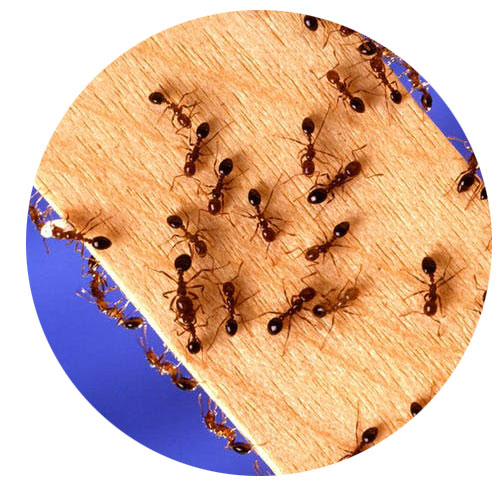
Insects and termites can cause a considerable structural damage
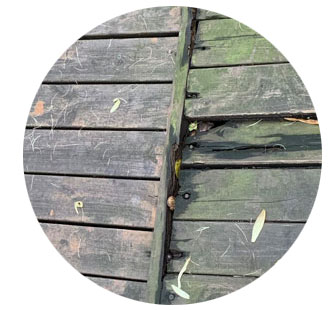
Not proof to moisture and water, creat rot and decay overtime
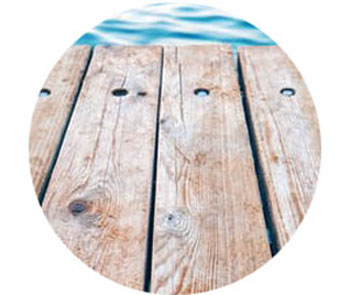
Nevitably weathered with splits, peel and cracks
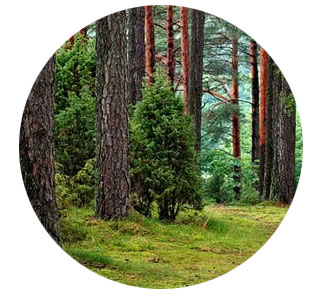
Wood enventually resuly in deforestation
Comparison Between WPC Decking vs. Wood Decking

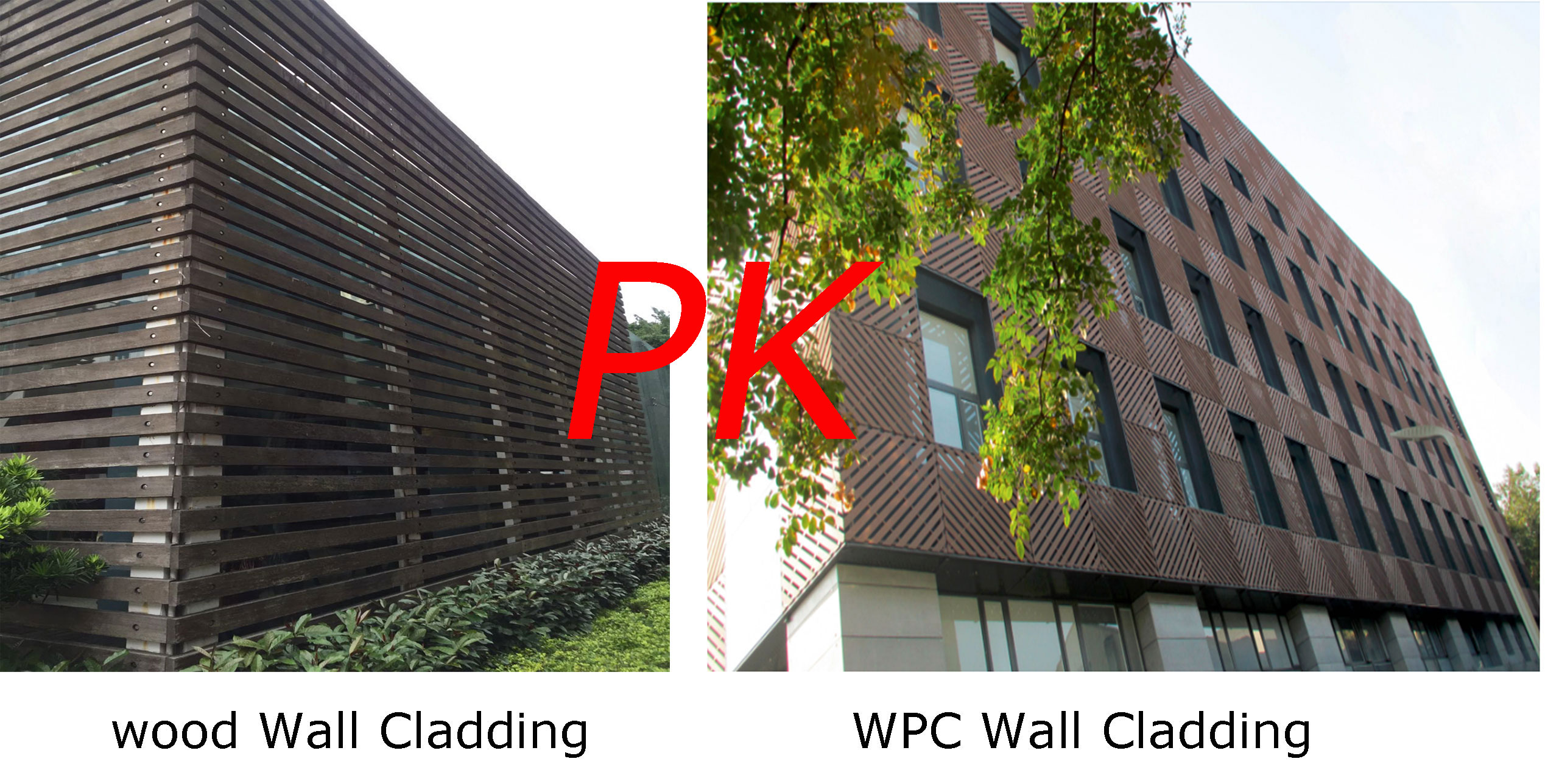

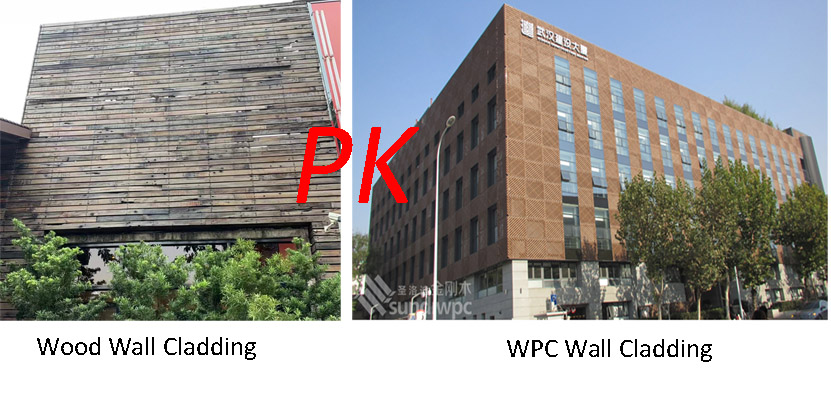
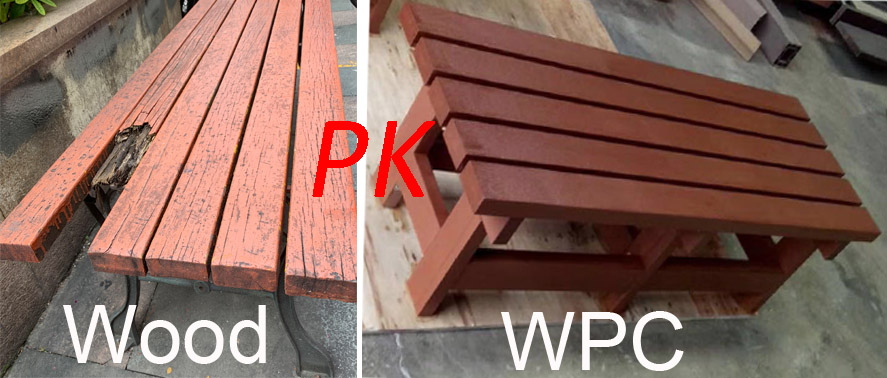
Cost Analysis
A. Initial Costs
Wood Decking: Wood decking generally presents a more affordable initial cost compared to composite materials. The lower upfront investment is appealing to those working within budget constraints, offering a cost-effective choice for outdoor projects.
WPC Decking: Typically, composite decking tends to have a higher initial cost compared to wood decking. The upfront investment is often greater due to the manufacturing process and the material’s durability, which may result in a higher price per square foot.
Certain woods are more expensive than others, and composite decking ranges in price, as well. This chart provides a vary general cost comparison of various decking materials.
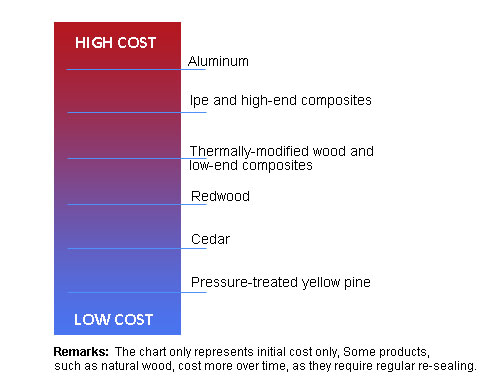
B. Long-Term Expenses
Wood Decking: Despite the lower initial cost, the long-term expenses of wood decking can be higher due to ongoing maintenance needs, including regular staining, sealing, and potential repairs. These maintenance efforts can accumulate costs over the deck’s lifespan.
WPC Decking: While some composite decking may be more expensive initially, its low maintenance may outweigh the initial upfront cost over the lifespan of the deck which can lead to cost savings in the long run. It generally reduces expenses associated with staining, sealing, and repairs, contributing to a lower total cost of ownership over time.
Conclusion
The choice between WPC decking vs. wood decking is not merely a matter of personal preference but a decision influenced by various factors. Each material brings its own set of advantages and limitations, catering to diverse needs and preferences for outdoor spaces. In making the decision, factors such as budget, long-term maintenance considerations, desired aesthetics, and the environmental impact must be carefully weighed.
If you’re considering a decking solution that combines the best of both worlds – durability, low maintenance, and aesthetic appeal – we invite you to explore Bongywood WPC, our products offer a versatile and eco-friendly alternative to traditional wood decking. Explore our range of Bongywood WPC materials for your decking project, and feel free to contact us for more information, expert guidance, or any inquiries. Let us assist you in creating your ideal outdoor living space.

